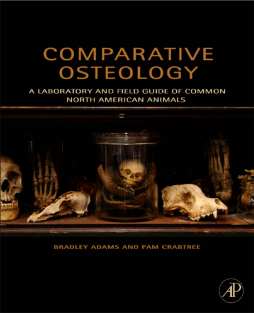
Additional Information
Book Details
Abstract
In the forensic context it is quite common for nonhuman bones to be confused with human remains and end up in the medical examiner or coroner system. It is also quite common for skeletal remains (both human and nonhuman) to be discovered in archaeological contexts. While the difference between human and nonhuman bones is often very striking, it can also be quite subtle. Fragmentation only compounds the problem. The ability to differentiate between human and nonhuman bones is dependent on the training of the analyst and the available reference and/or comparative material.
Comparative Osteology is a photographic atlas of common North American animal bones designed for use as a laboratory and field guide by the forensic scientist or archaeologist. The intent of the guide is not to be inclusive of all animals, but rather to present some of the most common species which also have the highest likelihood of being potentially confused with human remains.
- An affordably priced, compact laboratory/field manual, comparing human and nonhuman bones
- Contains almost 600 high-quality black and white images and diagrams, including inch and centimeter scales with each photograph
- Written by the foremost forensic scientists with decades of experience in the laboratory and as expert witnesses
- An additional Companion Web site hosts images from the volume the reader can magnify and zoom into to see specific landmarks and features on bones http://booksite.academicpress.com/9780123884374
"At long last we now have a well illustrated, comprehensive photographic guide to distinguish human skeletal remains from a wide range of common animal species. . . . This book is a must for the library of all osteologists or biological scientists called upon to identify human and non-human skeletal remains."—William Bass, retired, Emeritus Professor of Anthropology, University of Tennessee, Knoxville, USA
